Secondary menu
South Africa: Through a Window
Reflections on Physical Manifestations of Disparity
Artist's Statement
I spent twelve weeks of my summer living in South Africa as one of four fellows for the South African Society for Labour Law (SASLAW)’s Pro Bono project. There was legal work, of course, but what struck me the most was the feeling of being there – the compilation of nearly indescribable moments of living in a country and benefitting from a country with such a tumultuous history. I created this photo essay as a way to share my experience, and would like to begin with a caveat: my perspective is incredibly limited. I was an outsider with an outsider’s perspective. I hope this reflection encourages thought on the contrasts present in both of our societies and legal practices.
Often, as an outsider coming from a place like Canada, I felt stuck. A constant underpinning of anxiety. You were shuffled from a car to the inside of buildings. Everyone warned you constantly – people of all races – telling you to be fearful of the country they lived in. You were not supposed to walk on certain streets, including the entirety of the downtown core, not even during the day. I thought often of my own right to be within this space. What did I have to contribute? So I took photos, through car windows, high-rise law firms and government buildings, and from the top of a much begrudged red tour bus (the only way to see the entire city apparently). My view of the city was always at a distance. I saw hope and I saw disparity, disparity as stark as the woman who lives outside of the Louis Vuitton store right by our law school in Toronto, but it was more constant, more visible. It was in the structure of these cities, marked by apartheid and ongoing economic segregation.
You will notice there are almost no people in my photos. I did not want to take their images for many reasons, mainly because I could not ask for their permission to be photographed. This project focuses on physical places and how they demonstrate hope in the face of intense economic disparity within a country with an unemployment rate of 55% and a minimum wage of barely $2 CAD a day.
As I have said before, my perspective is limited and flawed. But I tried to bear witness to this place and think about what it meant to be there and what it meant to live in a place with its own disparities, just less visible.
As a final point: I am thankful for all of the opportunities I had in South Africa, for the funding from the IHRP, and for the opportunity to work with SASLAW. I am thankful for all of my friends, dance teachers, and guides, and for all of the unfailing kindness that was shown to me in the country. It is a debt that I do not know how to repay.
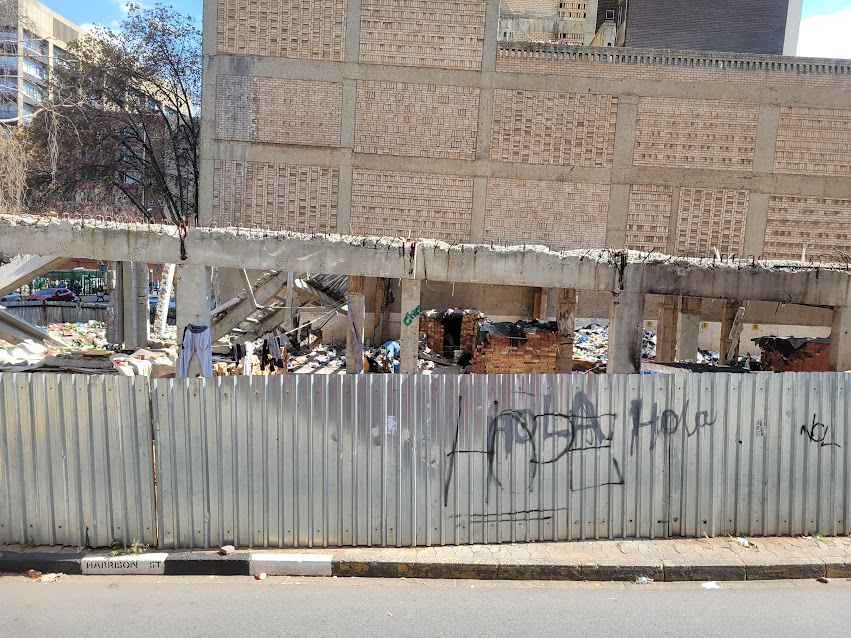 Downtown Johannesburg, 2022. Credit: Caeleb R. Goff
Downtown Johannesburg, 2022. Credit: Caeleb R. Goff
I took this photo my first weekend in the city, from a RedBus tour arranged by SASLAW. We were physically above the cityscape and its residents, looking down on where they were living. This building in particular was about a block away from Home Affairs, where during apartheid the infamous passbooks were assigned. Passbooks were the only things that entitled a Black person to legally be in the city. The line for Home Affairs now still spans around the block.
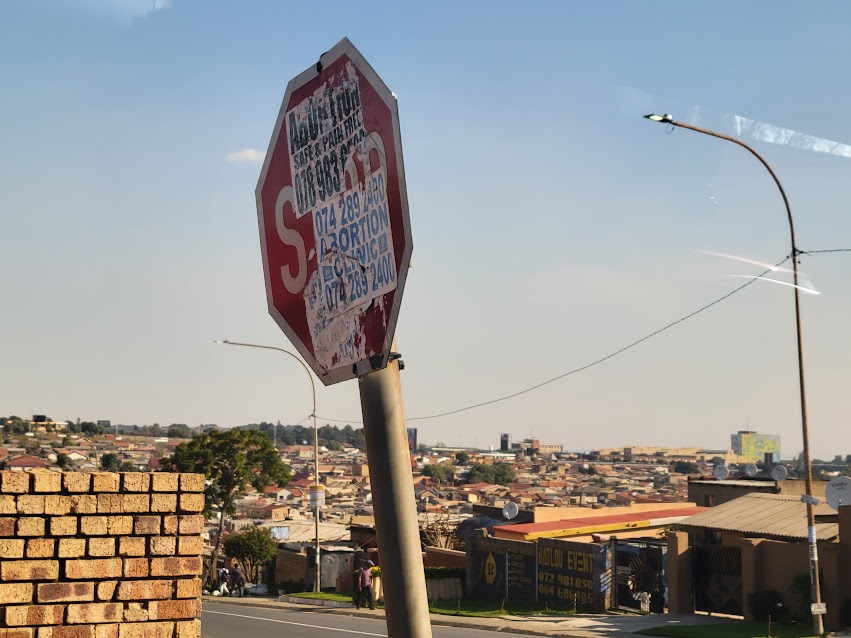 Soweto, 2022. Credit: Caeleb R. Goff
Soweto, 2022. Credit: Caeleb R. Goff
Our bus tour included a trip to Soweto, where we switched to a smaller van, with no open top. Townships, like Soweto, were created to further physical segregation – they are divided from Johannesburg by giant off runs from gold mines forming mountains across the landscape.
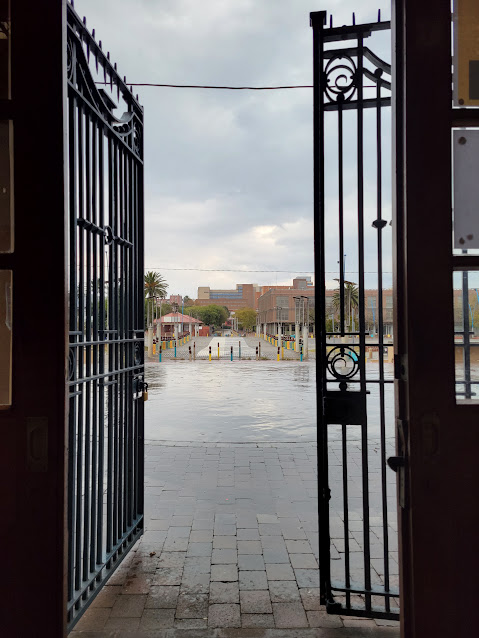
Museum Africa Entrance, Newtown Precinct, Johannesburg, 2022. Credit: Caeleb R. Goff
I got in a little trouble for taking this photo. I was too close to the door, with my cell phone visible. Easy for someone to run in and grab – they said. Considering a cell phone equals several month’s or even a year’s wages, I honestly would not have blamed someone for stealing it. Museum Africa itself was an odd mixture – nearly deserted, it held newspapers and photos from the Rivonia Trial, and a wall of photos from passbooks.
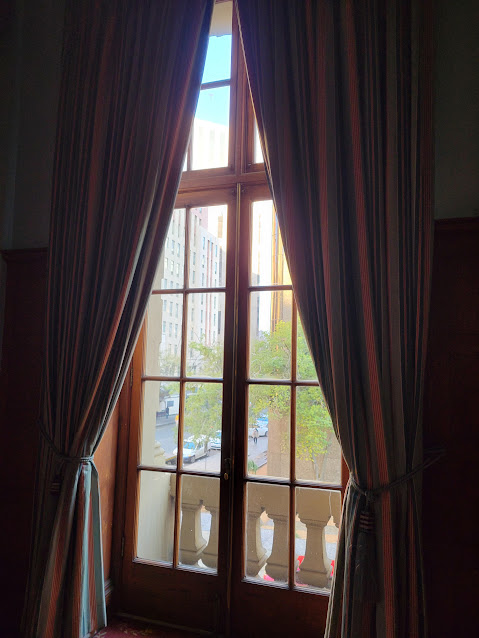
The Rand Club, Downtown Johannesburg, 2022. Credit: Caeleb R. Goff
The Rand Club is an old gentleman’s club with a sweeping velvet-carpeted staircase. I believe the first Black person to enter the Rand Club, who was not working there, was Nelson Mandela. The first woman was Queen Elizabeth II. It is part of a resurgence of old spaces, trying to now welcome all, with a vintage bookshop in the basement.
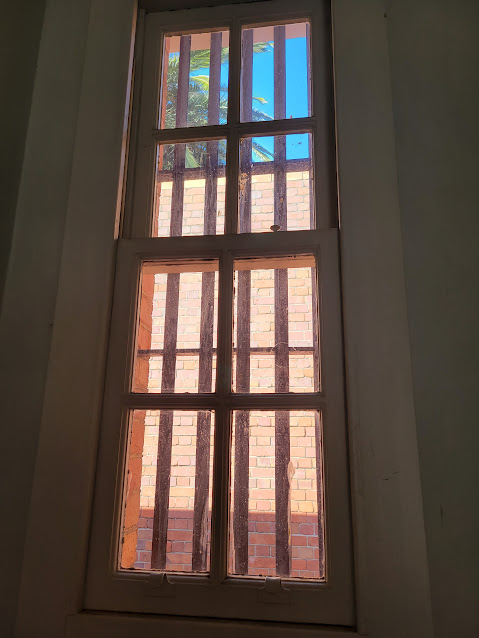
Women’s Prison, now Constitution Hill, Johannesburg, 2022. Credit: Caeleb R. Goff
The old women’s prison is now a museum. During apartheid many wound up in these prisons for not having a passbook when entering the city, for example. The prison uniform for Black women resembled a maid’s uniform. A tour guide mentioned that the Black women imprisoned there were not given underwear.
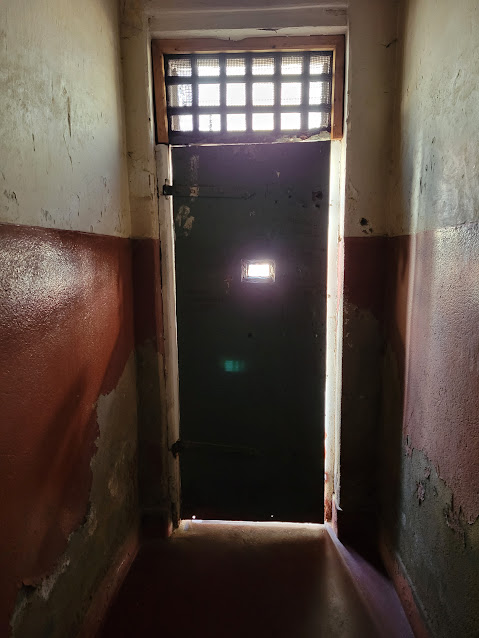
Inside of a Solitary Confinement cell, Men’s Prison, now Constitution Hill, Johannesburg, 2022. Credit: Caeleb R. Goff
My back was pressed against the back wall of a cell as I took this photo. Much of the old trial blocks were dismantled in order to build the constitutional court. The old bricks make a circular court room, with a window at street level so the judges may remember those for whom they make decisions.
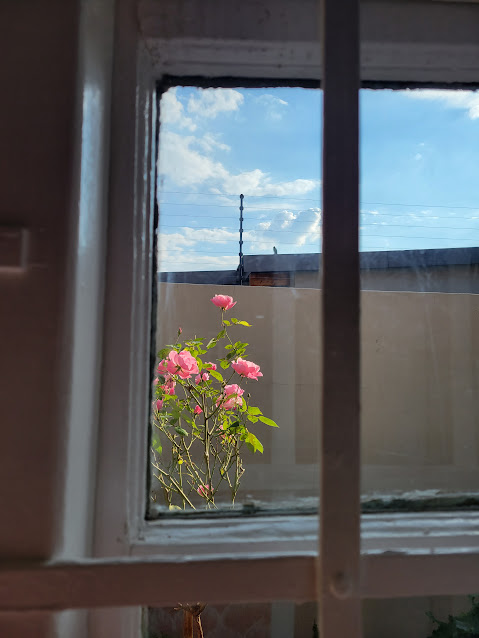
Window at my home in Rosebank, Johannesburg, 2022. Credit: Caeleb R. Goff
My home was beautiful. I would call it a villa. It had a twelve-foot wall, like all houses in the suburb did. Bars were on all of the windows and we had to unlock four doors to enter. The electric fence went around the property, and other houses around would have large spikes on the edges to prevent climbing over.
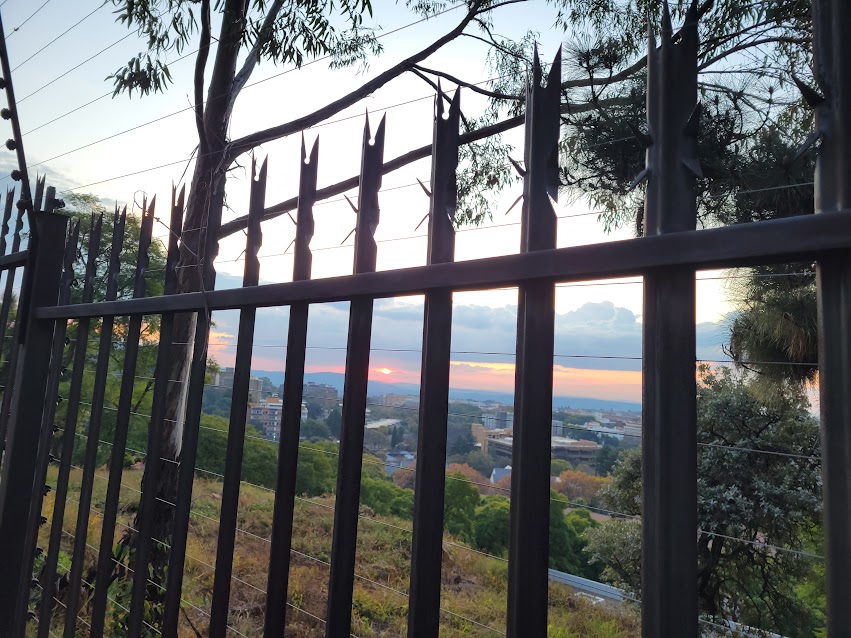 Fence Surrounding Public Park, Johannesburg, 2022. Credit: Caeleb R. Goff
Fence Surrounding Public Park, Johannesburg, 2022. Credit: Caeleb R. Goff
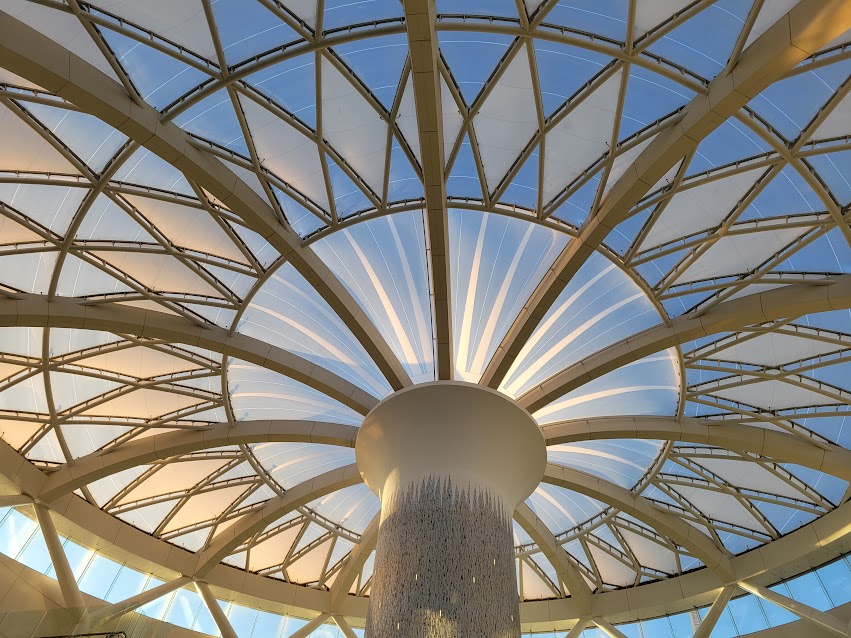 Sandton City Mall Roof, Johannesburg, 2022. Credit: Caeleb R. Goff
Sandton City Mall Roof, Johannesburg, 2022. Credit: Caeleb R. Goff
Sandton is the richest square mile in all of Africa. Most weeks we would travel from our suburb of Rosebank to either the downtown of Johannesburg to the court house or to Sandton to work within the law firms in their pro bono or labour departments. At the labour court, we often did not have power due to loadshedding – where the city government shuts off certain districts to conserve power. Our clients had to meet the cut off of making under 10,000 rand a month (approximately 1,000 CAD). While at some of the Sandton law firms, I saw paintings worth millions and ate steak lunches, while occasionally working for employers against striking employees.
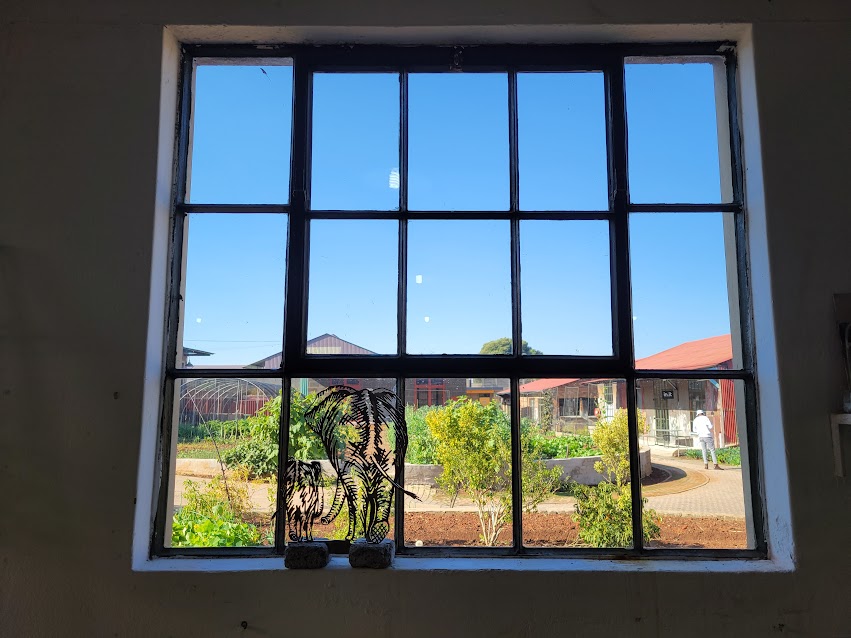 Victoria Yards, Johannesburg, 2022. Credit: Caeleb R. Goff
Victoria Yards, Johannesburg, 2022. Credit: Caeleb R. Goff
Victoria Yards is a reclaimed industrial space full of artists' studios. As many areas have fallen into disrepair after apartheid, artists have moved into various spaces in the downtown and other areas like Victoria Yards. The elephants pictured here are from artist James Delaney, who also reclaimed a public park to populate with his sculptures.
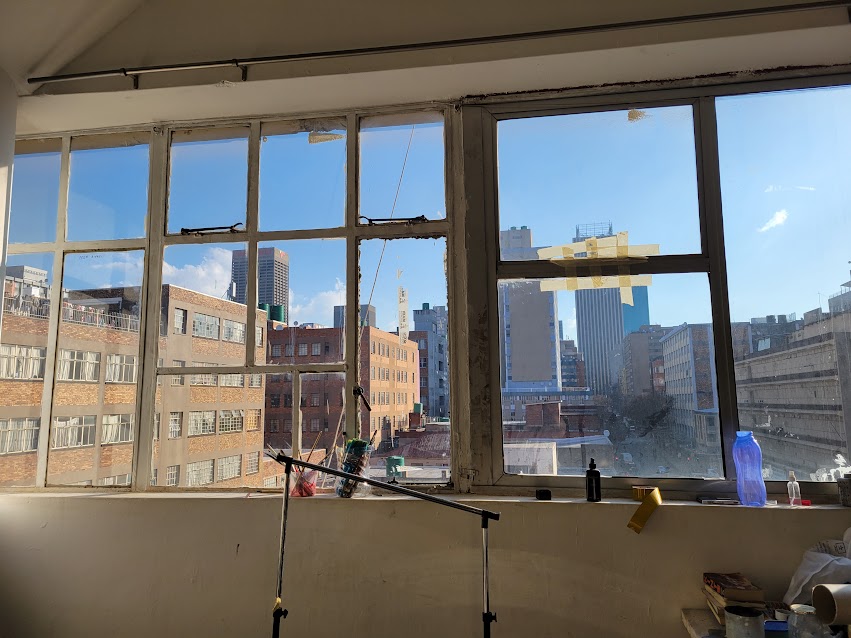 Artist’s Studio, Downtown Johannesburg, 2022. Credit: Caeleb R. Goff
Artist’s Studio, Downtown Johannesburg, 2022. Credit: Caeleb R. Goff
Being in a large downtown building was the only time, other than time spent in a car on the way to the labour court, that I saw most of the downtown area. This was in a building filled with artists' studios and apartments.
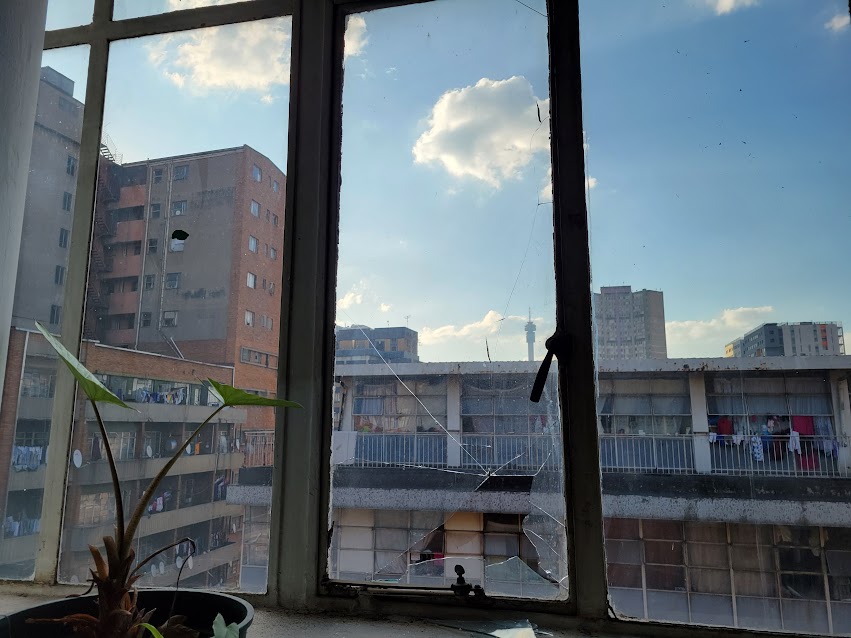 View of Apartments, Downtown Johannesburg, 2022. Credit: Caeleb R. Goff
View of Apartments, Downtown Johannesburg, 2022. Credit: Caeleb R. Goff
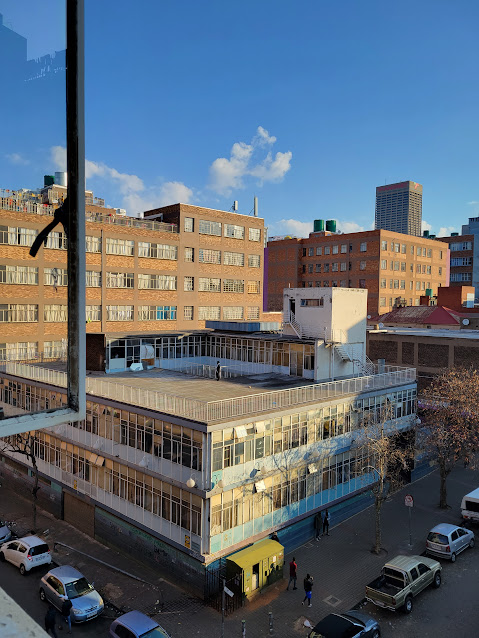
View of man in a suit on a roof, Downtown Johannesburg, 2022. Credit: Caeleb R. Goff
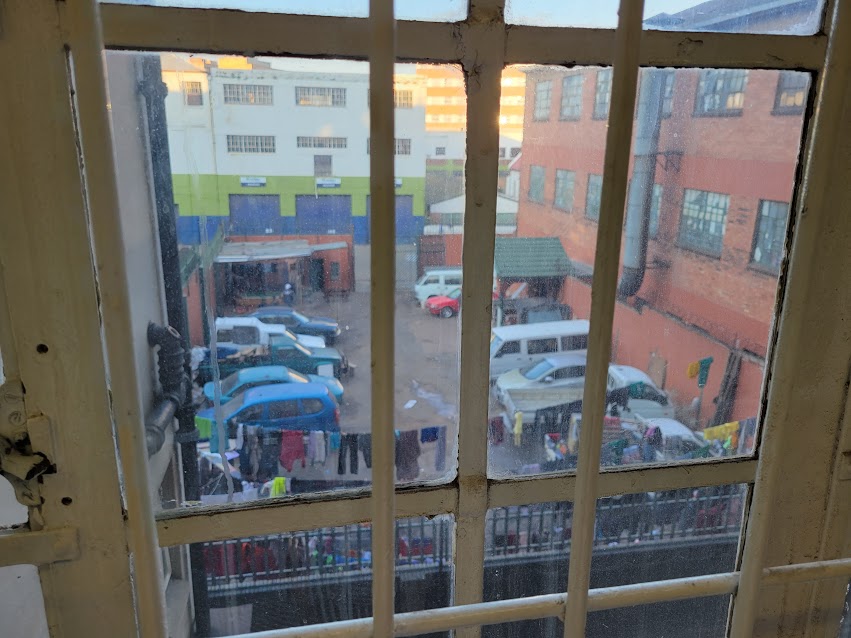 Pool Hall, Downtown Johannesburg, 2022. Credit: Caeleb R. Goff
Pool Hall, Downtown Johannesburg, 2022. Credit: Caeleb R. Goff
In the back corner men are playing pool among the cars. Much of the houses or living spaces at the ground level are made up of reclaimed materials, like the large roof seen here.
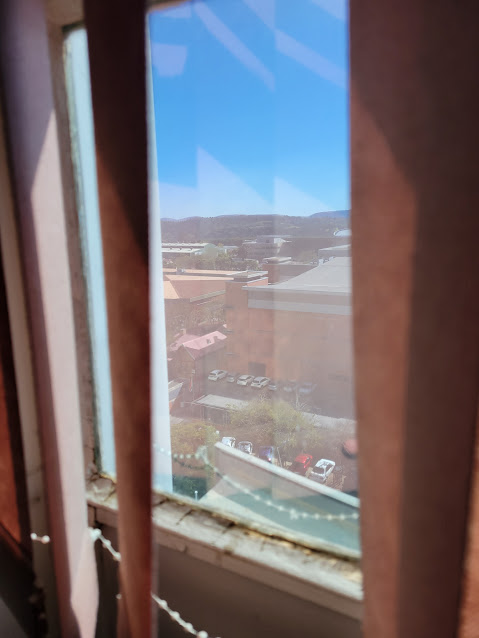
Home Affairs Building, Pretoria, 2022. Credit: Caeleb R. Goff
The Home Affairs building felt like walking into the 1980s, complete with carpeting and yellow paint. The constant traffic and honking could be heard throughout the building, often caught on the recordings of arbitrations taking place inside. Most government buildings have not been updated – and there are ongoing trials for misuse of public funds.
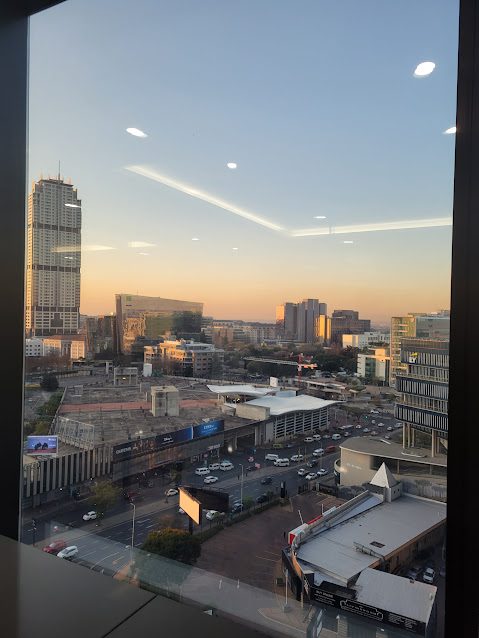
View from Sandton Law Firm, 2022. Credit: Caeleb R. Goff
Often from the windows of Sandton’s law firms you could see the boundaries of the townships far off in the distance, too far for my camera. Townships, like the Alex or Alexandra, are right on the border with Sandton, and can be seen as all of the houses are the same height next to the tall buildings.

Small Gecko stuck inside my home in Rosebank, Johannesburg, 2022. Credit: Caeleb R. Goff
Not to worry, the gecko did escape into the garden which leads to the second cottage on the property. Most houses in historically white areas have cottages, which were built originally to house live-in servants and were zoned during apartheid as 'black spaces.' The houses on the same property were zoned as 'whites only spaces.'

View of Town Hall from the Labour Court Washroom, Durban, 2022. Credit: Caeleb R. Goff
Most labour courts we visited did not have soap in the washrooms, nor any towels.
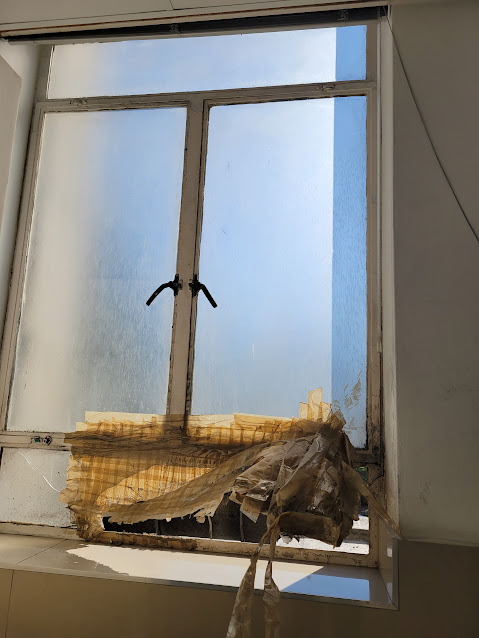
Window in Labour Court Washroom, Durban, 2022. Credit: Caeleb R. Goff
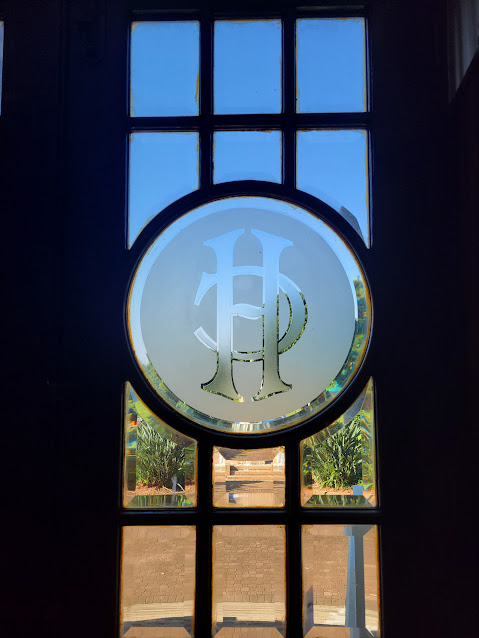
View from the Law School at University of Kwa-Zulu Natal, Durban, 2022. Credit: Caeleb R. Goff
Outside of the window there is a statute of colonialist King George V, he is covered in paint with a flag which decries to "end white privilege."
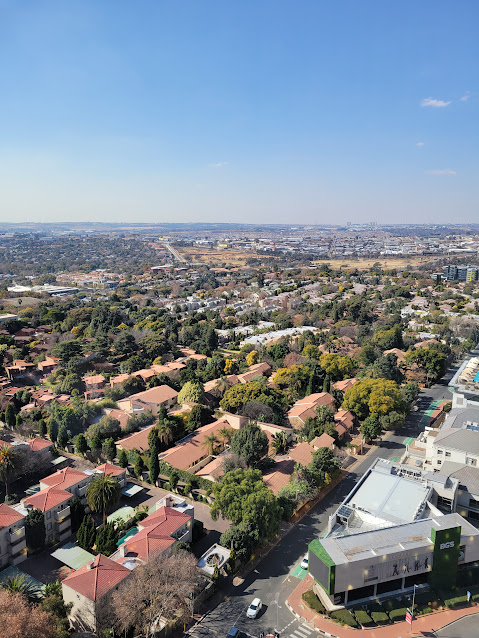
View from Law Firm in Durban, 2022. Credit: Caeleb R. Goff
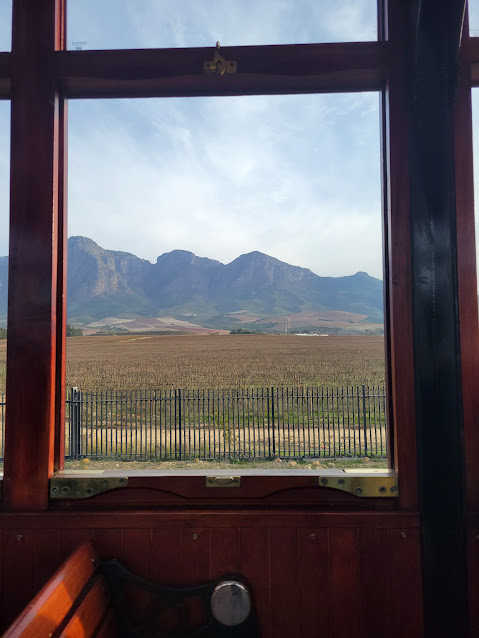
View from Tram in Franschhoek, Near Cape Town, 2022. Credit: Caeleb R. Goff
Cape Town felt like a Malibu vacation, with beautiful views and all of the issues I saw so presently in Johannesburg and Durban much less in view. It was more hidden here – as the byline of the city is to remove persons experiencing homelessness and poverty far out of the city, only seen on our drive between the city and its outskirts in the vineyards. There were sprawling houses made of reclaimed materials, which I did not take photos of.
 House near vineyard, Franschhoek, 2022. Credit: Caeleb R. Goff
House near vineyard, Franschhoek, 2022. Credit: Caeleb R. Goff
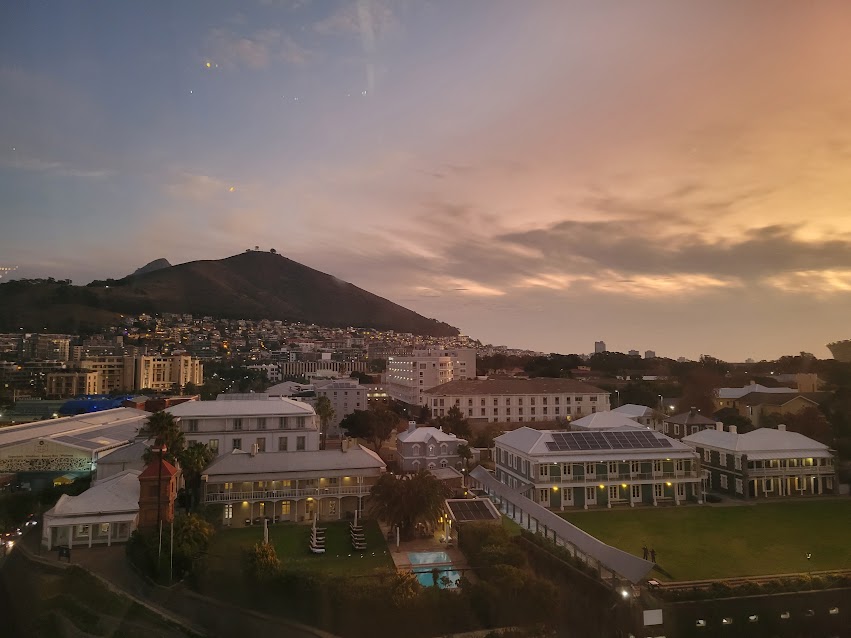 View of Camps Bay from Ferris Wheel, Cape Town, 2022. Credit: Caeleb R. Goff
View of Camps Bay from Ferris Wheel, Cape Town, 2022. Credit: Caeleb R. Goff
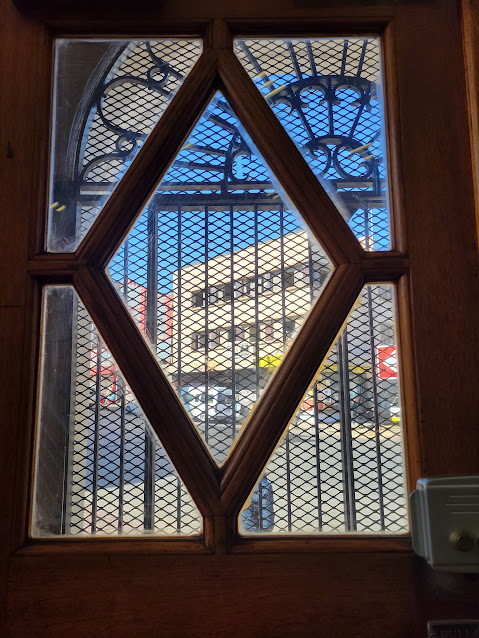
View from inside NUMSA headquarters, Downtown Johannesburg, 2022. Credit: Caeleb R. Goff
We got off at the wrong door outside of NUMSA – one of the biggest unions in South Africa. Our contact ran out to meet us in her heels. All of us walking half a block in business clothes caused her a great deal of worry. NUMSA, and unions like it, were the backbone of the anti-apartheid movement, striving to reclaim power through the regulation of labour.
 Makgulong A Matala Children’s Home, Soweto, 2022. Credit: Caeleb R. Goff
Makgulong A Matala Children’s Home, Soweto, 2022. Credit: Caeleb R. Goff
Mandela Day is a day where providing service to the community is a national holiday. With a law firm, we went to Soweto to paint and refurbish a children’s home. Our team was made up of lawyers and administrative staff who did not have much experience painting or renovating. The law firm also hired a photographer.
